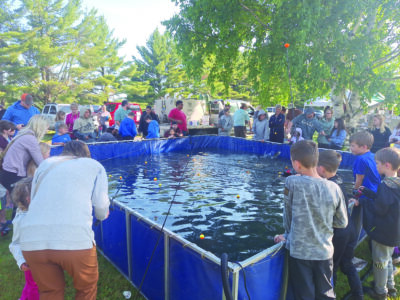Painting a picture: UP-wide survey looks at health needs

Garrett Neese/Daily Mining Gazette A recently released health needs assessment, led by the Western Upper Peninsula Health Department, seen above, is the first such project done Upper Peninsula-wide.
HANCOCK — The first Upper Peninsula-wide community health needs assessment will help counties throughout the U.P. move forward with community improvement plans.
The project, compiled over the past 18 months, includes between 300 and 500 returned surveys from each county — 5,000 in all.
“It gives us an idea of where we are on a lot of these issues, like immunization, and gives us an ability to measure it over time,” said Terry Frankovich, medical director for the Western Upper Peninsula Health Department, which led the study. “…We can look three years, six years, nine years down the road and start to see ‘Are we making a difference?’ with strong local data.”
In one section, residents identified their top community issues. The top four were cost of health care with co-pays and deductibles; having health insurance; drug abuse; and economics (jobs and wages).
Residents intuitively responded with what public health officials call “social determinants of health,” said project director Ray Sharp.
“People understand that if you want to improve the health of the community, if you have good paying jobs that have health insurance, that’s one way to do it,” he said.
People were also asked the same questions as state and national health departments ask regarding people’s health status, behaviors and access to care, such as if they smoke or whether they’ve gone to a doctor in the past year.
Thirty-two community entities in the U.P. collaborated on the assessment — all six health departments, most hospitals, community mental health organizations and more.
In some past assessments, county-specific data had been based on a survey sent out state- or nation-wide, Frankovich said. With the small populations of many U.P. counties and the low response rate of surveys, that created a high margin for error.
The results of the U.P.-wide survey were weighted to account for the differing populations of each county, Sharp said, as well as age, gender, income, educational attainment and the probability of being selected within a household.
Frankovich said the data will be presented to stakeholders and community groups in each area, who can then identify the top needs in their communities and find ways to address them.
“So this document can both help to inform the process of figuring out what to prioritize, and then the data in here can actually support communities in things like grant applications, to try and address the problems,” she said.
To see the full report, go to wupdhd.org/upchna.





